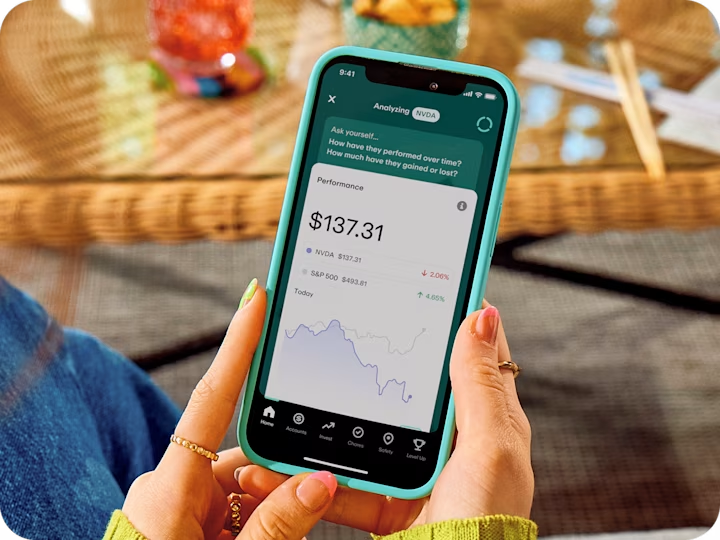
Can kids invest in stocks? What parents should know

Hey, $mart parents 💡
Bring money lessons home with Greenlight’s $mart Parent newsletter, a quick read with impactful tips — delivered free to your inbox weekly.
Kids typically can’t open accounts themselves to invest in stocks, but there are several options for parents to invest on their kids’ behalf. Giving kids an opportunity to learn how to invest under your guidance, while continuing to develop their experience and financial knowledge, can help set them up for a life of financial success.
Here, we break down a couple of ways that kids can learn to invest, with you in the driver's seat.
4 ways kids can invest
Parents can open an account for their child to start investing in a few different ways, such as:
Custodial accounts: The parent controls the custodial account until the child becomes an adult (either 18 or 21, depending on your state’s laws). The money in the account can only be used for the child's benefit.
Custodial Roth IRA: If your child has earned income throughout the year, they can contribute money. Income can be from a job or self-employment, such as babysitting, mowing lawns, or dog walking. Keep records for tax purposes and consult with a tax professional to ensure you’re doing it right.
529 plans: If you’re planning to save for your kids’ college, consider including them in the investing conversations with a 529 plan. Investments grow tax-free, and withdrawals aren’t taxed as long as the funds are used for qualified education purposes.
Greenlight: With Greenlight’s debit card for kids, your child can start learning how to manage and save their own money. If they’re ready for the next step, Greenlight also gives kids more ownership and guidance to learn how to invest independently. Kids can do their own research, propose investments in stocks and ETFs, and you can review before they go through.
The benefits of investing for kids
You don’t have to start big to reap the rewards from investing early. Here are a few ways it can help jump-start your kids’ future:
Power of compounding: The younger you are, the more time you have to invest and let your money grow and compound. Learn how to explain compound interest to your kids and also let them use a compound interest calculator to visualize how it works.
Hands-on experience: Any opportunity kids get to interact with money, especially as they’re learning and growing, can pay significant dividends down the road for them. Learning about the stock market, watching their investments move up and down, understanding risk, and working toward their financial goals are just a few of the benefits.
Decision-making: Taking it one step further, if your kids are involved in the investment decisions, such as researching and proposing investment trades, it helps them learn even faster as they start to feel ownership over their money and their choices.
How parents can support young investors
As you go on this journey together, your support and guidance will go a long way toward their comfort level and success.
Choose the right account type based on their age and goals.
Let kids participate by picking companies they know and tracking their progress.
Support their growth with educational tools to go along with their experience.
Set limits and have conversations about the risks and any feedback along the way. Mistakes are ok and part of the learning process.
As kids get older, prepare for transitioning the accounts into their name, so they know how to handle the money responsibly.
FAQs
At what age can kids legally invest?
Kids must be at least 18 to open their own brokerage account, but they can start investing much earlier through a custodial account managed by a parent or guardian. These accounts allow adults to invest on behalf of the child until they reach adulthood.
What are the tax implications?
Custodial accounts may be subject to the “kiddie tax,” which applies to a child’s unearned income above a certain threshold. This income is taxed at the parent’s marginal rate, which can affect your family’s overall tax strategy.
Can kids invest with Greenlight?
Yes. With a parent’s approval, kids can use the Greenlight app to invest in real stocks and ETFs, starting with as little as $1 and no hidden fees.
Want to raise savvy investors? With Greenlight, kids get real-world experience under your guidance. Try Greenlight, one month, risk-free.†
By: Brad Goldbach
Brad Goldbach is a writer focused on financial education, parenting, and tech. He brings over five years of journalism experience and a 12-year background in finance, including time as an advisor. At Greenlight, he’s written extensively on topics like investing for kids, credit building, and family budgeting. Married and a girl dad of two, Brad spends his free time reading, playing board games, and heading out on family hiking adventures when it’s not too hot in the Florida sun.
Share via
